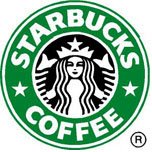TTAB Citable No. 9: "LESSBUCKS COFFEE" Confusingly Similar to Famous "STARBUCKS" Mark
In its ninth citable decision of 2006, the TTAB rejected Marshall S. Ruben's ITU application to register LESSBUCKS COFFEE for coffee and retail store services ("COFFEE" disclaimed). The Board sustained a Section 2(d) opposition brought by Starbucks Coffee Company, finding STARBUCKS to be "truly a famous mark" and according it a "broad scope of protection" under the fifth du Pont factor. Starbucks' survey evidence removed any doubt about the similarity of the marks. Starbucks U.S. Brands, LLC v. Ruben, 78 USPQ2d 1741 (TTAB 2006).

Starbucks introduced staggering evidence of the fame of its mark, including: $10 billion in sales and $150 million in marketing expenditures during 2001-2004; 5,000 company-owned and licensed stores throughout the country; 11 million consumer transactions per week; and 350,000 hits per week at its website. As of 2004, nearly half of all American consumers had visited a Starbucks' location. "In fact, opposers have shown that industry, business, brand leaders, and the general public have recognized STARBUCKS as one of the most famous brands in the world."
Of course, the "fame factor" plays a dominant role in the du Pont analysis. "[T]he Federal Circuit has stated repeatedly that there is no excuse for even approaching the well-known trademark of a competitor insasmuch as '[a] strong mark ... casts a long shadow which competitors must avoid.'" (citing Kenner Parker Toys Inc. v. Rose Art Indus., Inc., 22 USPQ2d 1454, 1456 (Fed. Cir. 1992)).
The Board next found that the involved goods and services are identical (in part), and that Ruben's identified goods and services are presumed to travel through the same channels of trade to the same classes of customers as those of Starbucks.
Ruben feebly argued that Starbucks' customers are careful, sophisticated purchasers, but Starbucks contended that its products are relatively inexpensive and may be purchased by ordinary consumers at retail stores, grocery stores, and warehouse club stores. The Board noted that Ruben did not provide any evidence that "coffee lovers are sophisticated in terms of a likelihood of confusion analysis." Instead, the Board found that consumers "devote limited attention to such goods and services, and thus are more susceptible to confusion."
Turning to the marks, the Board noted again that when marks appear on virtually identical goods and services, the degree of similarity between the marks necessary to support a likelihood of confusion declines. Here, "both marks -- STARBUCKS COFFEE and LESSBUCKS COFFEE -- consist of two words having similar cadence. Both STARBUCKS and LESSBUCKS contain nine letters, two syllables, and end in the identical term, BUCKS." Moreover, as to STARBUCKS COFFEE and LESSBUCKS COFFEE, Applicant Ruben admitted that "visually, when typed the same, they look like similar letters."
The Board then turned to Starbucks' survey evidence, concluding that is was "reliable and therefore of probative value." Despite Ruben's objections, the Board found the format of the survey (which paralleled the Ever-Ready survey), to be appropriate.
"Turning to the results of the survey, almost half of the ordinary consumer participants who encountered the term LESSBUCKS COFFEE believed that the products offered under the LESSBUCKS designation were in some way connected with STARBUCKS. When the interviewer asked what made them believe that there was a connection or association between LESSBUCKS COFFEE and STARBUCKS, substantially all of the respondents referred to the similarity of the marks."
The Board noted that the marks have different meanings, but it concluded that, in their entireties, they "are sufficiently similar as to appearance, sound and overall commercial impression, such that this du Pont factor weighs strongly in opposers' favor."
Finally, the Board addressed Ruben's "parody" argument. Ruben, believing that Starbucks charges too much, argued that his mark "will be perceived as a play on the word STARBUCKS that simply suggests applicant's products cost 'less' than those of Starbucks or other competitors." Thus customers are not likely to be confused because the joke will be obvious and the fame of the STARBUCKS mark diminishes any likelihood of confusion. The Board was not amused. First, it pointed out Ruben's inconsistency when he testified that he did not choose the LESSBUCKS mark to play off the STARBUCKS mark, while also maintaining that his mark is a parody of STARBUCKS. Second, the Board observed that, under the case law, "joking uses of trademarks are deserving of less protection when the object of the joke is the mark of a directly competing product." And thirdly, the results of the survey provide evidence that the supposed "parody" does not diminish the likelihood of confusion.
Weighing all the pertinent du Pont factors, the Board found confusion likely.
The Board declined to reach the merits of Starbucks' dilution claim, and it likewise declined to consider Opposer's claim that Ruben lacked a bona fide intention to use his mark in commerce.
TTABlog comment: Wow! That survey evidence was a killer. Without that, the Board would have faced a real interesting decision.
As to Starbuck's dilution claim, one wonders how that would have fared. Are the marks "identical or very or substantially similar," as required by Toro Co. v. ToroHead Inc., 61 USPQ2d 1164, 1178 (TTAB 2001)?
Text Copyright John L. Welch 2006.




0 Comments:
Post a Comment
<< Home